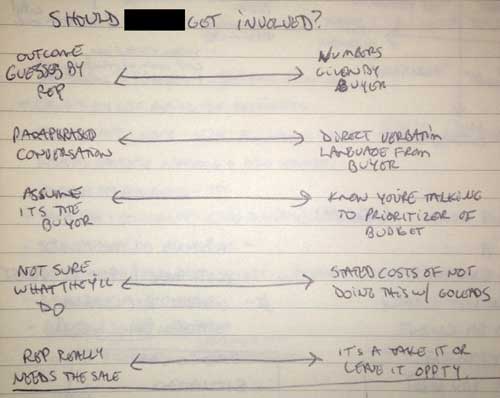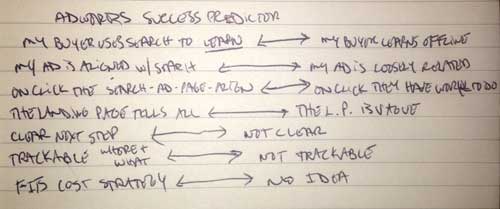Predicting Success Tool for Leaders
Predicting Success Tool

Help your people make decisions faster with this little tool. The reason you’ll want to put this into practice is twofold. One, it helps you push your decision making down a level which speeds up results, and two, it raises the level of the decisions you do get pulled into. Plus, it’s way better than the advice I used to get from my bosses, “don’t bring me problems, bring me solutions.”
Here’s the situation where it works best. Your people come to you for advice and you know that each time you answer a question or solve a problem for them, they get a little dumber.
That’s it. Nothing too exotic. If you’re asked to help make a decision or if you’re not sure how your people are making decisions, this tool will come in handy because it gives insights into how you think and exposes nuances of that thinking which get glazed over in regular discussion.
Tool examples
I have two examples. The first, came up after we started including the business owner as a closing tool for bigger opportunities. It was successful at landing more and bigger deals and a time crunch ensued. We developed a tool for the reps to use to score the opportunity before asking for the owner’s time.
First, we made a list of the items he considered when presented with a new opportunity. The owner interpreted that as a list of things the owner needed to know to make a difference in the transaction. I had asked him, what do you want to know before you get involved?
- He wanted to understand the client’s desired outcome
- He wanted to hear how the client described the issues
- He wanted to know he was talking to the right buyer
- He wanted to hear how the client felt about not taking action
- He wanted to know the rep’s motivation
Once we had the list, he needed to describe the range of answers expected. This step is critical because it gives your people context. For instance:
- Understanding the client’s outcome will range from an outcome that is assumed or guessed at by the rep on one side to an outcome that is defined and uses measures given directly by the buyer.
- Hearing how the client described the issues will range from a paraphrased conversation to direct, verbatim language from the buyer.
It’s since been refined with use, but here’s how it started:

Let’s look at another example. I just used this to demonstrate how I troubleshoot a Google Adwords campaign.

It starts with my broad list: Who’s the buyer? Does the ad align with their search? Does the page align with the ad? What information is on the landing page?
Then I give context to each question by defining the range of answers expected. “I know the buyer uses search to learn” to “the buyer learns offline” or “my ad is aligned with search” to “my ad is loosely related.”
That’s it. Once you have a rough draft, pull it out and go through each question with your team member. You’ll know you’re on the right track when they point at an item on the list and you hear, “Why does that matter?” It’s a teaching moment and the knowledge transfer will follow.
To get started, think about last week when you were asked to weigh in on a decision. The size of the decision doesn’t matter, it can be major or minor. Once you have something in mind, make a list of what you will consider before making that decision, then give each consideration a range of possible answers.
You’re on your way. As Mary Poppins says, “Well begun is half-done.”
Good stuff.
